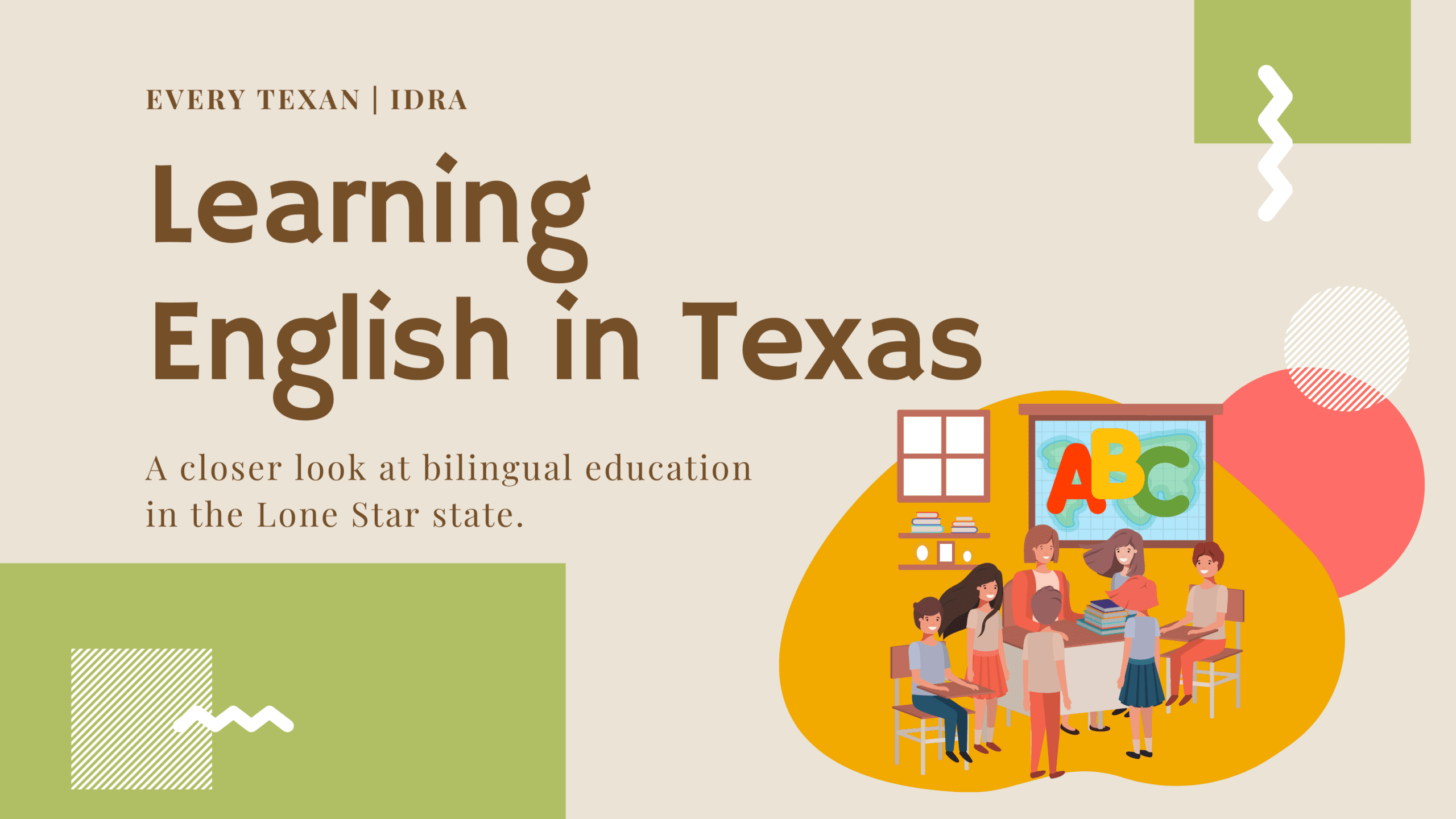Read our full joint report with IDRA about Learning English in Texas here.
Long before its founding in 1845, Texas was a multilingual state. Currently, Texas educates the second-most students in the country with a home language other than English. Students are identified as English learners (EL) – also known as emergent bilingual students (EB) – based on a state language assessment that evaluates a student’s primary language other than English to determine if the student qualifies for additional support to develop the English language skills necessary for success in school.
Our rich diversity of languages, cultures, skills, and expertise makes Texas an attractive and rapidly growing state. For our state to remain home to a competitively skilled and educated workforce, we must ensure that we educate English learners effectively in both their home languages and English. This means working to right past wrongs of racial and ethnic discrimination through equitable and adequate funding and increased support for effective programming to promote the future opportunities for EL/EB students.
Money matters in education. However, the percent of additional funding for EL students above the base level of per-student funding has not changed since 1984. What’s more, campus level spending on bilingual education suffered some of the most drastic cuts in 2011, at elementary schools with the highest percentage of low-income students. The big 2019 school finance reform added back some funding, but it still did not fully make up for the earlier cuts. Meanwhile, Texas serves an increasing number of EL students in public schools as total student enrollment grows across the state.
Texas can, and must, do better to serve its English learner students. Decades of civil rights litigation, court mandates, and policy battles have allowed Texas schools to make progress in bilingual education, but we still have far to go. Funding for the public school system and EL students remains inadequate to meet the needs of today’s dynamic and growing state economy.
As the state grows and faces rising enrollment in the public education system, the number of EL students also rises. Texas has been home to many languages since the beginning, and now is the time to seriously invest in our EL students’ educational success. After all, shortchanging bilingual education now means cheating Texas of an educated and bilingual workforce in the future.
This joint report by Every Texan and the Intercultural Development Research Association (IDRA) introduces the current state of education for English learners in Texas, discusses the challenges and outcomes of bilingual and ESL education, and provides recommendations to improve equitable student performance, opportunities, and state funding. Texas can no longer afford to shortchange our EL students.
Read our full report with IDRA here.
